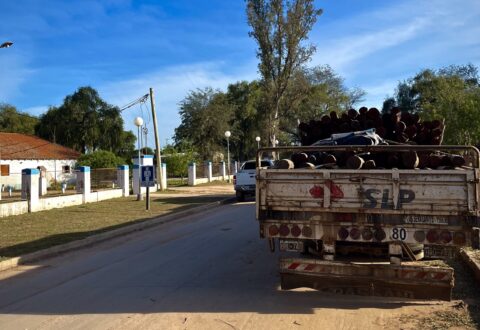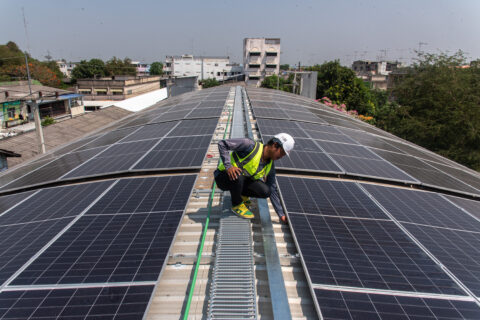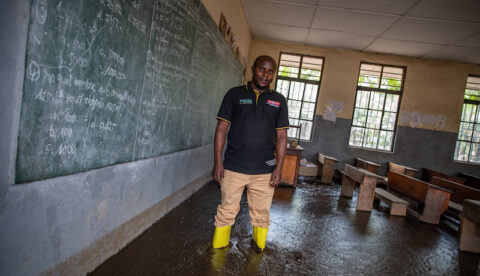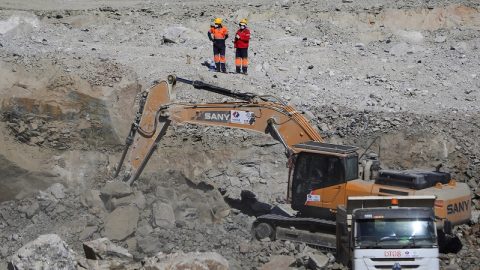As the global community grapples with the urgent need to mitigate climate change, Indigenous-led conservation efforts are emerging as a powerful and effective approach. Rooted in millennia-old traditions of sustainable land stewardship, these initiatives not only protect biodiversity and sequester carbon but also revitalize cultural practices and assert Indigenous sovereignty.
The Power of Indigenous Land Stewardship
Indigenous Peoples have been stewards of their lands since time immemorial, developing sophisticated systems of resource management that maintain ecological balance while sustaining communities.
According to Valérie Courtois, who leads the Indigenous Leadership Initiative, the Indigenous perspective on environmental protection goes beyond simply cordoning off natural areas. Instead, she emphasizes that their approach focuses on fostering sustainable and respectful interactions with the environment, including the land, water, and all forms of life. Courtois asserts that this comprehensive and interconnected view of nature is precisely the kind of approach required to effectively tackle the challenges posed by climate change.
Indigenous Protected and Conserved Areas (IPCAs)
A cornerstone of Indigenous-led conservation efforts in Canada is the establishment of Indigenous Protected and Conserved Areas (IPCAs). These are lands and waters where Indigenous governments have the primary role in protecting and conserving ecosystems through Indigenous laws, governance, and knowledge systems.
The Thaidene Nëné Indigenous Protected Area
One prominent example is the Thaidene Nëné Indigenous Protected Area, established by the Łutsël K’é Dene First Nation in the Northwest Territories. Covering 26,376 square kilometers of boreal forest, tundra, and freshwater ecosystems, it represents a new model of conservation that prioritizes Indigenous leadership.
Steven Nitah, Lead Negotiator for the Łutsël K’é Dene First Nation, shares, “Thaidene Nëné isn’t just about protecting the land; it’s about maintaining our way of life and our relationship with the land. By doing so, we’re also contributing to global efforts to combat climate change.”
Carbon Sequestration and Climate Mitigation
Indigenous-led conservation efforts play a crucial role in climate change mitigation by protecting and enhancing natural carbon sinks.
The Great Bear Rainforest Agreement
The Great Bear Rainforest Agreement, led by Coastal First Nations in British Columbia, protects 6.4 million hectares of temperate rainforest. This agreement not only safeguards one of the world’s largest intact temperate rainforests but also secures significant carbon stores.
Marilyn Slett, Chief Councillor of the Heiltsuk Nation and President of Coastal First Nations, notes, “By protecting these forests, we’re not just preserving our cultural heritage; we’re also keeping millions of tonnes of carbon out of the atmosphere. It’s a powerful example of how Indigenous stewardship contributes to global climate solutions.”
Restoring Ecosystems, Restoring Balance
Many Indigenous-led conservation initiatives focus on restoring degraded ecosystems, which can significantly enhance carbon sequestration while revitalizing habitats.
The Bloodvein River Watershed Restoration Project
In Manitoba, the Bloodvein First Nation is leading efforts to restore the Bloodvein River watershed. This project combines traditional knowledge with scientific approaches to enhance wetland habitats, improving their capacity to store carbon and mitigate flooding.
Elder Florence Paynter of the Bloodvein First Nation shares, “We’re healing the land, and in doing so, we’re healing ourselves. This work connects us to our ancestors and ensures a healthier future for our children and the planet.”
Traditional Fire Management
Indigenous fire management practices, long suppressed by colonial policies, are being revitalized as an effective tool for both ecosystem management and climate change mitigation.
The Revitalization of Cultural Burning in British Columbia

(Image Credit: Elisabeth Jurenka, Licensed from Unsplash+)
In British Columbia, many First Nations are working to bring back cultural burning practices. These controlled, low-intensity fires reduce the risk of catastrophic wildfires while promoting biodiversity and enhancing the land’s carbon storage capacity.
Fire Keeper William Nikolakis of the Tsilhqot’in National Government explains, “Our traditional burning practices create a mosaic of habitats that are more resilient to climate change. By reducing fuel loads, we’re also preventing larger, more intense fires that release massive amounts of carbon into the atmosphere.”
Guardian Programs: Indigenous-Led Monitoring and Management
Indigenous Guardian programs, where community members are employed to monitor and manage their traditional territories, are a crucial component of many conservation efforts.
The Haida Gwaii Watchmen Program
The Haida Nation’s Watchmen Program in British Columbia is one of the oldest and most well-established Guardian programs in Canada. Guardians monitor protected areas, conduct wildlife surveys, and manage tourist activities, ensuring that conservation efforts align with Haida laws and values.
Cindy Boyko, a Haida Watchman, shares, “As Guardians, we’re the eyes and ears on the land. We’re not just collecting data; we’re maintaining our connection to the land and passing on our knowledge to future generations. This work is crucial for both conservation and our cultural continuity.”
Challenges and Opportunities
While Indigenous-led conservation efforts have shown remarkable success, they also face significant challenges.
Funding and Capacity Building
Securing long-term, stable funding for IPCAs and Guardian programs remains a challenge. However, initiatives like the federal government’s Target 1 Challenge and the Indigenous Guardians Pilot Program are providing crucial support.
Reconciling Legal Frameworks
Implementing Indigenous-led conservation within existing colonial legal frameworks can be complex. However, progress is being made in recognizing Indigenous laws and governance systems in conservation efforts.
The Global Impact of Indigenous Conservation
Indigenous-led conservation efforts in Canada are part of a global movement. Indigenous Peoples manage or have tenure rights over at least ~38 million square kilometres in 87 countries, overlapping with about 40% of all terrestrial protected areas and ecologically intact landscapes.
Victoria Tauli-Corpuz, former UN Special Rapporteur on the Rights of Indigenous Peoples, emphasizes, “Indigenous-led conservation is crucial not just for local ecosystems, but for global climate mitigation efforts. These initiatives demonstrate that respecting Indigenous rights and traditional knowledge is key to effective climate action.”
Policy Implications: Supporting Indigenous-Led Conservation
The success of Indigenous-led conservation efforts has important implications for climate policy at both national and international levels.
Canada’s Commitment to Indigenous-Led Conservation
The Canadian government has committed to supporting Indigenous-led conservation as part of its plan to protect 25% of lands and waters by 2025 and 30% by 2030. This includes funding for IPCAs and Guardian programs.
International Recognition
Internationally, there is growing recognition of the importance of Indigenous-led conservation in global climate strategies. The UN’s post-2020 Global Biodiversity Framework explicitly acknowledges the role of Indigenous Peoples in achieving global conservation targets.
Healing the Land, Healing the Climate
Indigenous-led conservation efforts represent a powerful approach to climate change mitigation, one that recognizes the intrinsic link between environmental health, cultural well-being, and Indigenous rights. By protecting and restoring ecosystems, these initiatives not only sequester carbon and preserve biodiversity but also revitalize cultural practices and assert Indigenous sovereignty.
As the world searches for effective climate solutions, Indigenous-led conservation offers a model of stewardship that is both ancient and innovatively relevant to our current crisis. These efforts demonstrate that healing the land and addressing climate change are deeply intertwined processes rooted in respect for Indigenous knowledge and rights.
In the words of Valérie Courtois, “When we heal the land, we heal ourselves, and we contribute to healing the planet. Indigenous-led conservation isn’t just about protecting nature – it’s about restoring right relations between all living things. This is the foundation of true climate resilience.”
As we move forward in our global efforts to mitigate climate change, supporting and learning from Indigenous-led conservation initiatives will be crucial. These efforts offer not just hope for a more sustainable future but also a practical pathway to achieving it – one that honours the deep connections between land, culture, and climate that have sustained Indigenous peoples for millennia.
Blog by Rye Karonhiowanen Barberstock
(Image Credit: Nathan Anderson, Licensed from Unsplash+)
The post The Healing Land: Indigenous-Led Conservation Efforts as Climate Change Mitigation appeared first on Indigenous Climate Hub.
The Healing Land: Indigenous-Led Conservation Efforts as Climate Change Mitigation
Climate Change
Colombia proposes expert group to advance talks on minerals agreement
Colombia wants countries to discuss options for a global agreement to ensure that the extraction, processing and recycling of minerals – including those needed for the clean energy transition – don’t harm the environment and human wellbeing.
The mineral-rich nation is proposing to create an expert group to “identify options for international instruments, including global and legally-binding instruments, for coordinated global action on the environmentally sound management of minerals and metals through [their] full lifecyle”.
Colombia hopes this will eventually lead to an agreement on the need for an international treaty to define mandatory rules and standards that would make mineral value chains more transparent and accountable.
The proposal was set out in a draft resolution submitted to the UN Environment Assembly (UNEA) earlier this week and seen by Climate Home News. UNEA, which is constituted of all UN member states, is the world’s top decision-making body for matters relating to the environment. The assembly’s seventh session will meet in Kenya in December to vote on countries’ proposals.
Soaring demand for the minerals used to manufacture clean energy technologies and electric vehicles, as well as in the digital, construction and defence industries have led to growing environmental destruction, human rights violations and social conflict.
Colombia argues there is an “urgent need” to strengthen global cooperation and governance to reduce the risks to people and the planet.
Options for a global minerals agreement
The proposal is among a flurry of initiatives to strength global mineral governance at a time when booming demand is putting pressure on new mining projects.
Colombia, which produces emeralds, gold, platinum and silver for exports, first proposed the idea for a binding international agreement on minerals traceability and accountability on the sidelines of the UN biodiversity talks it hosted in October 2024.
Since then, the South American nation has been quietly trying to drum up support for the idea, especially among African and European nations.
Its draft resolution to UNEA7 contains very few details, leaving it open for countries to discuss what kind of global instrument would be best suited to make mineral supply chains more transparent and sustainable.
Does the world need a global treaty on energy transition minerals?
Colombia says it wants the expert group to build on other UN initiatives, including a UN Panel on Critical Energy Transition Minerals, which set out seven principles to ensure the mining, processing and recycling of energy transition minerals are done responsibly and benefit everyone.
The group would include technical experts and representatives from international and regional conventions, major country groupings as well as relevant stakeholders.
It would examine the feasibility and effectiveness of different options for a global agreement, consider their costs and identify measures to support countries to implement what is agreed.
The resolution also calls for one or two meetings for member states to discuss the idea before the UNEA8 session planned in late 2027, when countries would decide on a way forward.
No time to lose for treaty negotiations
Colombia’s efforts to advance global talks on mineral supply chains have been welcomed by resource experts and campaigners. But not everyone agrees on the best strategy to move the discussion forward at a time when multilateralism is coming under attack.
Johanna Sydow, a resource policy expert who heads the international environmental policy division of the Heinrich-Böll Foundation, said she had hoped that the resolution would explicitly call for negotiations to begin on an international minerals treaty.
“Treaty negotiations take a long time. If you don’t even start with it now, it will take even longer. I don’t see how in two or three years it will be easier to come to an agreement,” she told Climate Home.
Despite the geopolitical challenges, “we need joint rules to prevent a huge race to the bottom for [mineral] standards”. That could start with a group of countries coming together and starting to enforce joint standards for mining, processing and recycling minerals, she said.
But any meaningful global agreement on mineral supply chains would require backing from China, the world’s largest processor of minerals, which dominates most of the supply chains. And with Colombia heading for an election in May, it will need all the support it can get to move its proposal forward.
‘Voluntary initiative won’t cut it’
Juliana Peña Niño, Colombia country manager at the Natural Resource Governance Institute, is more optimistic. “Colombia’s leadership towards fairer mineral value chains is a welcome step,” she told Climate Home News.
“At UNEA7, we need an ambitious debate that gives the proposed expert group a clear mandate to advance concrete next steps — not delay decisions — and that puts the voices of those most affected at the centre. One thing is clear: the path forward must ultimately deliver a binding instrument, as yet another voluntary initiative simply won’t cut it,” she said.
More than 50 civil society groups spanning Latin America, Africa and Europe previously described Colombia’s work on the issue as “a chance to build a new global paradigm rooted in environmental integrity, human rights, Indigenous Peoples’ rights, justice and equity”.
“As the energy transition and digitalisation drive demand for minerals, we cannot afford to repeat old extractive models built on asymmetry – we must redefine them,” they wrote in a statement.
Main image: The UN Environment Assembly is hosted in Nairobi, Kenya. (Natalia Mroz/ UN Environment)
The post Colombia proposes expert group to advance talks on minerals agreement appeared first on Climate Home News.
Colombia proposes expert group to advance talks on minerals agreement
Climate Change
California Sanctions Stark Disparities in Pesticide Exposure During Pregnancy
If you’re young, pregnant and Latina, chances are you live near agricultural fields sprayed with higher levels of brain-damaging organophosphate pesticides.
A baby in the womb has few defenses against industrial petrochemicals designed to kill.
California Sanctions Stark Disparities in Pesticide Exposure During Pregnancy
Climate Change
DeBriefed 3 October 2025: UK political gap on climate widens; Fossil-fuelled Typhoon Ragasa; ‘Overshoot’ unknowns
Welcome to Carbon Brief’s DeBriefed.
An essential guide to the week’s key developments relating to climate change.
This week
Shattered climate consensus
FRACKING BAN: UK energy secretary Ed Miliband has announced that the government will bring forward its plans to permanently ban fracking, in a move designed to counter a promise from the hard-right Reform party to restart efforts to introduce the practice, the Guardian said. In the same speech, Miliband said Reform’s plans to scrap clean-energy projects would “betray” young people and future generations, the Press Association reported.
ACT AXE?: Meanwhile, Kemi Badenoch, leader of the Conservatives, pledged to scrap the 2008 Climate Change Act if elected, Bloomberg reported. It noted that the legislation was passed with cross-party support and strengthened by the Conservatives.
‘INSANE’: Badenoch faced a backlash from senior Tory figures, including ex-prime minister Theresa May, who called her pledge a “catastrophic mistake”, said the Financial Times. The newspaper added that the Conservatives were “trailing third in opinion polls”. A wide range of climate scientists also condemned the idea, describing it as “insane”, an “insult” and a “serious regression”.
Around the world
- CLIMATE CRACKDOWN: The US Department of Energy has told employees in the Office of Energy Efficiency and Renewable Energy to avoid using the term “climate change”, according to the Guardian.
- FOREST DELAY: Plans for Brazil’s COP30 flagship initiative, the tropical forests forever fund, are “suffer[ing] delays” as officials remain split on key details, Bloomberg said.
- COP MAY BE ‘SPLIT’: Australia could “split” the hosting of the COP31 climate summit in 2026 under a potential compromise with Turkey, reported the Guardian.
- DIVINE INTERVENTION: Pope Leo XIV has criticised those who minimise the “increasingly evident” impact of global warming in his first major climate speech, BBC News reported.
€44.5 billion
The cost of extreme weather and climate change in the EU in the last four years – two-and-a-half times higher than in the decade to 2019, according to a European Environment Agency report covered by the Financial Times.
Latest climate research
- Fossil-fuelled climate change caused around 36% of Typhoon Ragasa’s direct damage to homes and properties in southern China, according to a rapid impact attribution study | Imperial Grantham Institute – Climate Change and the Environment
- Some 86% of the global population are concerned about climate change, according to a survey of 280,000 people in 142 countries and regions | Climate Policy
- A global shift towards a “planetary health diet” could slash emissions and save tens of thousands of lives each day | EAT-Lancet Commission 2025 report
(For more, see Carbon Brief’s in-depth daily summaries of the top climate news stories on Monday, Tuesday, Wednesday, Thursday and Friday.)
Captured

Clean energy has met 100% of Great Britain’s electricity demand for a record 87 hours this year so far, according to new Carbon Brief analysis. This is up from just 2.5 hours in 2021 and 64.5 hours in all of 2024. The longest stretch of time where 100% of electricity demand was met by clean energy stands at 15 hours, from midnight on 25 May 2025 through to 3pm on 26 May, according to the analysis.
Spotlight
‘Overshoot’ unknowns
As the chances of limiting global warming to 1.5C dwindle, there is increasing focus on the prospects for “overshooting” the Paris Agreement target and then bringing temperatures back down by removing CO2 from the atmosphere.
At the first-ever Overshoot Conference in Laxenburg, Austria, Carbon Brief asks experts about the key unknowns around warming “overshoot”.
Sir Prof Jim Skea
Chair of the Intergovernmental Panel on Climate Change (IPCC) and emeritus professor at Imperial College London’s Centre for Environmental Policy
So there are huge knowledge gaps around overshoot and carbon dioxide removal (CDR). As it’s very clear from the themes of this conference, we don’t altogether understand how the Earth would react in taking CO2 out of the atmosphere.
We don’t understand the nature of the irreversibilities and we don’t understand the effectiveness of CDR techniques, which might themselves be influenced by the level of global warming, plus all the equity and sustainability issues surrounding using CDR techniques.
Prof Kristie Ebi
Professor at the University of Washington’s Center for Health and the Global Environment
There are all kinds of questions about adaptation and how to approach effective adaptation. At the moment, adaptation is primarily assuming a continual increase in global mean surface temperature. If there is going to be a peak – and of course, we don’t know what that peak is – then how do you start planning? Do you change your planning?
There are places, for instance when thinking about hard infrastructure, [where overshoot] may result in a change in your plan – because as you come down the backside, maybe the need would be less. For example, when building a bridge taller. And when implementing early warning systems, how do you take into account that there will be a peak and ultimately a decline? There is almost no work in that. I would say that’s one of the critical unknowns.
Dr James Fletcher
Former minister for public service, sustainable development, energy, science and technology for Saint Lucia and negotiator at COP21 in Paris.
The key unknown is where we’re going to land. At what point will we peak [temperatures] before we start going down and how long will we stay in that overshoot period? That is a scary thing. Yes, there will be overshoot, but at what point will that overshoot peak? Are we peaking at 1.6C, 1.7C, 2.1C?
All of these are scary scenarios for small island developing states – anything above 1.5C is scary. Every fraction of a degree matters to us. Where we peak is very important and how long we stay in this overshoot period is equally important. That’s when you start getting into very serious, irreversible impacts and tipping points.
Prof Oliver Geden
Senior fellow and head of the climate policy and politics research cluster at the German Institute for International and Security Affairs and vice-chair of IPCC Working Group III
[A key unknown] is whether countries are really willing to commit to net-negative trajectories. We are assuming, in science, global pathways going net-negative, with hardly any country saying they want to go there. So maybe it is just an academic thought experiment. So we don’t know yet if [overshoot] is even relevant. It is relevant in the sense that if we do, [the] 1.5C [target] stays on the table. But I think the next phase needs to be that countries – or the UNFCCC as a whole – needs to decide what they want to do.
Prof Lavanya Rajamani
Professor of international environmental law at the University of Oxford
I think there are several scientific unknowns, but I would like to focus on the governance unknowns with respect to overshoot. To me, a key governance unknown is the extent to which our current legal and regulatory architecture – across levels of governance, so domestic, regional and international – will actually be responsive to the needs of an overshoot world and the consequences of actually not having regulatory and governance architectures in place to address overshoot.
Watch, read, listen
FUTURE GAZING: The Financial Times examined a “future where China wins the green race”.
‘JUNK CREDITS’: Climate Home News reported on a “forest carbon megaproject” in Zimbabwe that has allegedly “generated millions of junk credits”.
‘SINK OR SWIM’: An extract from a new book on how the world needs to adapt to climate change, by Dr Susannah Fisher, featured in Backchannel.
Coming up
- 7 October: International Energy Agency (IEA) renewables 2025 report launch
- 8-10 October: World summit of Indigenous peoples and nature, Abu Dhabi, UAE
- 9-15 October: International Union for the Conservation of Nature (IUCN) 2025 congress, Abu Dhabi, UAE
Pick of the jobs
- UK government foreign, commonwealth and development office, senior climate policy adviser | Salary: CA$93,207. Location: Calgary, Canada
- Wellcome Trust, senior research manager, climate and health | Salary: £64,800. Location: London
- Bloomberg, product manager – climate, nature and sustainability regulations | Salary: Unknown. Location: London
DeBriefed is edited by Daisy Dunne. Please send any tips or feedback to debriefed@carbonbrief.org.
This is an online version of Carbon Brief’s weekly DeBriefed email newsletter. Subscribe for free here.
The post DeBriefed 3 October 2025: UK political gap on climate widens; Fossil-fuelled Typhoon Ragasa; ‘Overshoot’ unknowns appeared first on Carbon Brief.
-
Climate Change2 years ago
Spanish-language misinformation on renewable energy spreads online, report shows
-
Climate Change Videos2 years ago
The toxic gas flares fuelling Nigeria’s climate change – BBC News
-
Climate Change2 months ago
Guest post: Why China is still building new coal – and when it might stop
-

 Greenhouse Gases1 year ago
Greenhouse Gases1 year ago嘉宾来稿:满足中国增长的用电需求 光伏加储能“比新建煤电更实惠”
-

 Climate Change1 year ago
Climate Change1 year ago嘉宾来稿:满足中国增长的用电需求 光伏加储能“比新建煤电更实惠”
-
Greenhouse Gases2 months ago
Guest post: Why China is still building new coal – and when it might stop
-

 Carbon Footprint1 year ago
Carbon Footprint1 year agoUS SEC’s Climate Disclosure Rules Spur Renewed Interest in Carbon Credits
-
Renewable Energy3 months ago
US Grid Strain, Possible Allete Sale











